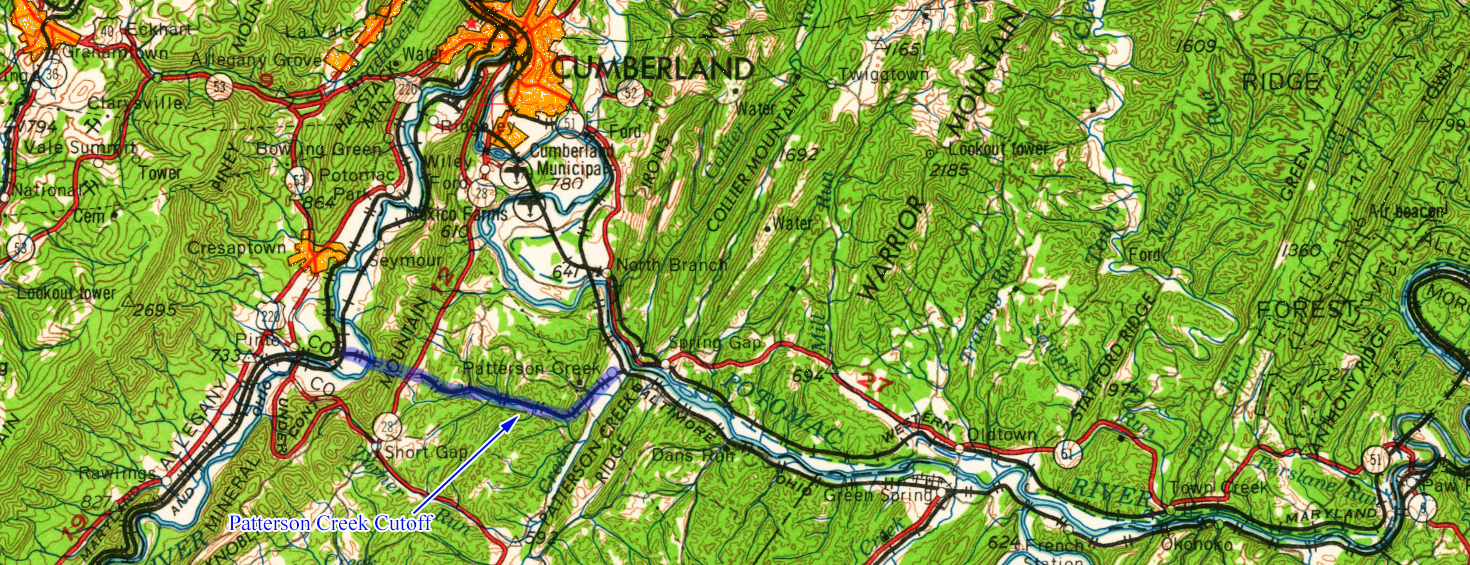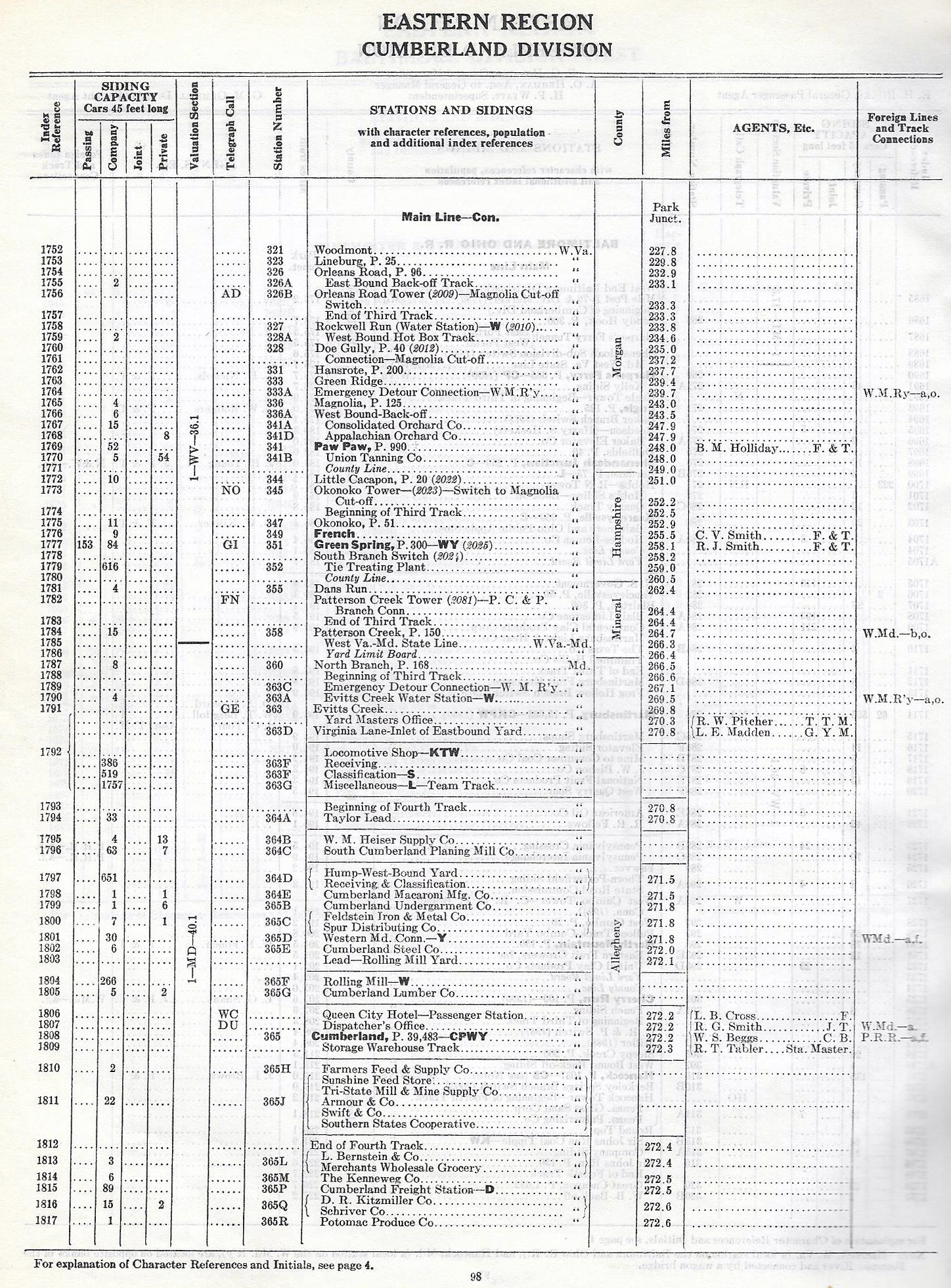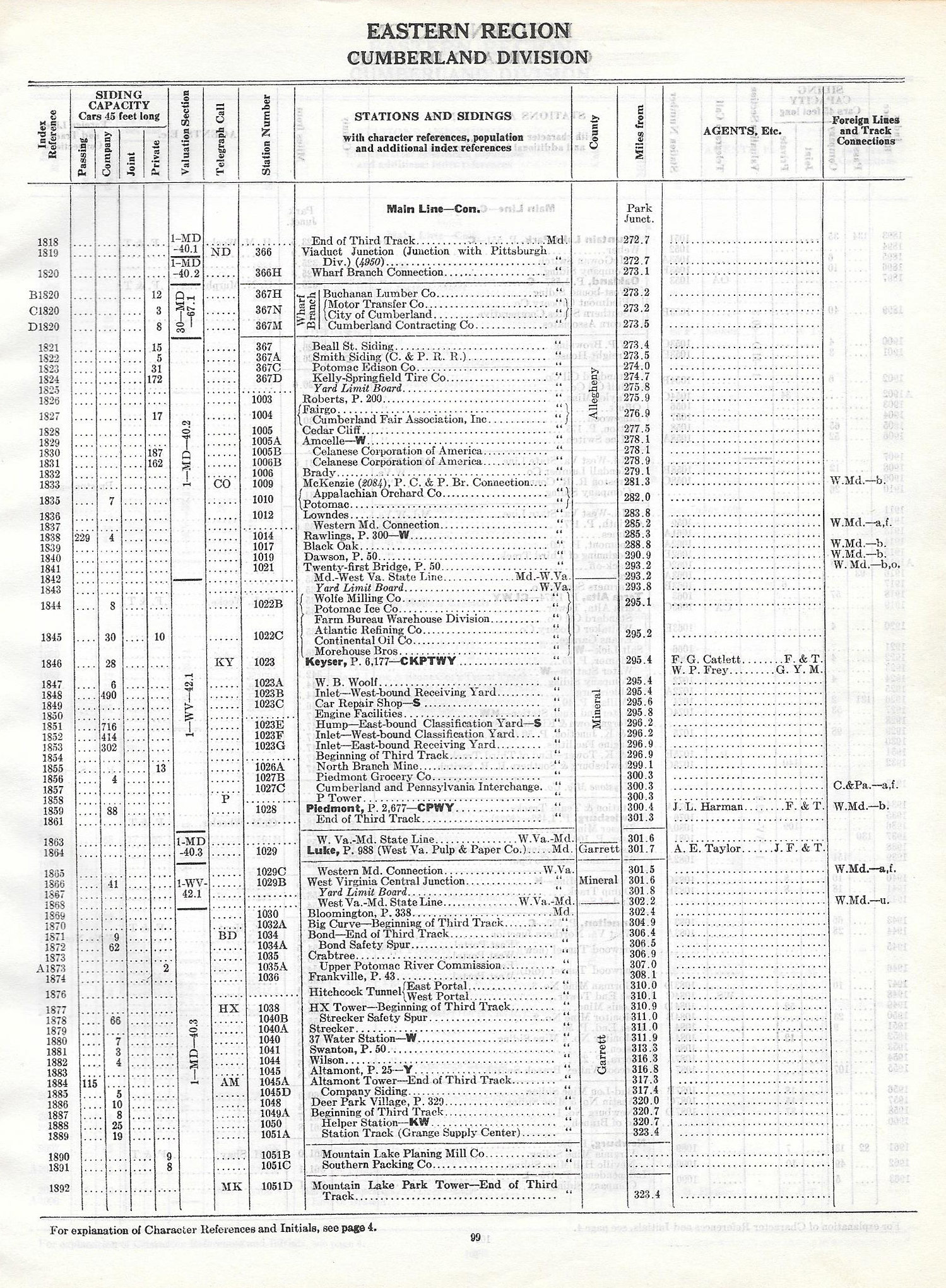Patterson Creek Cutoff (B&O): Map, Timetables, History
Last revised: March 1, 2025
By: Adam Burns
The Baltimore & Ohio's Patterson Creek Cutoff, known by the railroad as its Patterson Creek & Potomac Branch, dates to the early 20th century when as the railroad implemented a number of improvement projects to speed up trains along its East End.
The cutoff was constructed in the early 20th century to provide a more direct route between Keyser and Cumberland, bypassing the busy main line south of the city.
Cumberland was a major staging point and junction along the railroad where its Chicago and St. Louis main lines split. As such an important city, the B&O constructed a major classification yard here.
The cutoff significantly reduced travel time and increased efficiency for the B&O, contributing to its growth and success in the region, particularly in regards to coal movements.
Due to Cumberland's layout and traffic through the region there has often been talk of reopening the cutoff as a relief valve around the city (which, ironically, was the very reason for its initial construction). However, thus far no hard plans have been made to carry out this endeavor and the 6-mile corridor remains abandoned today.
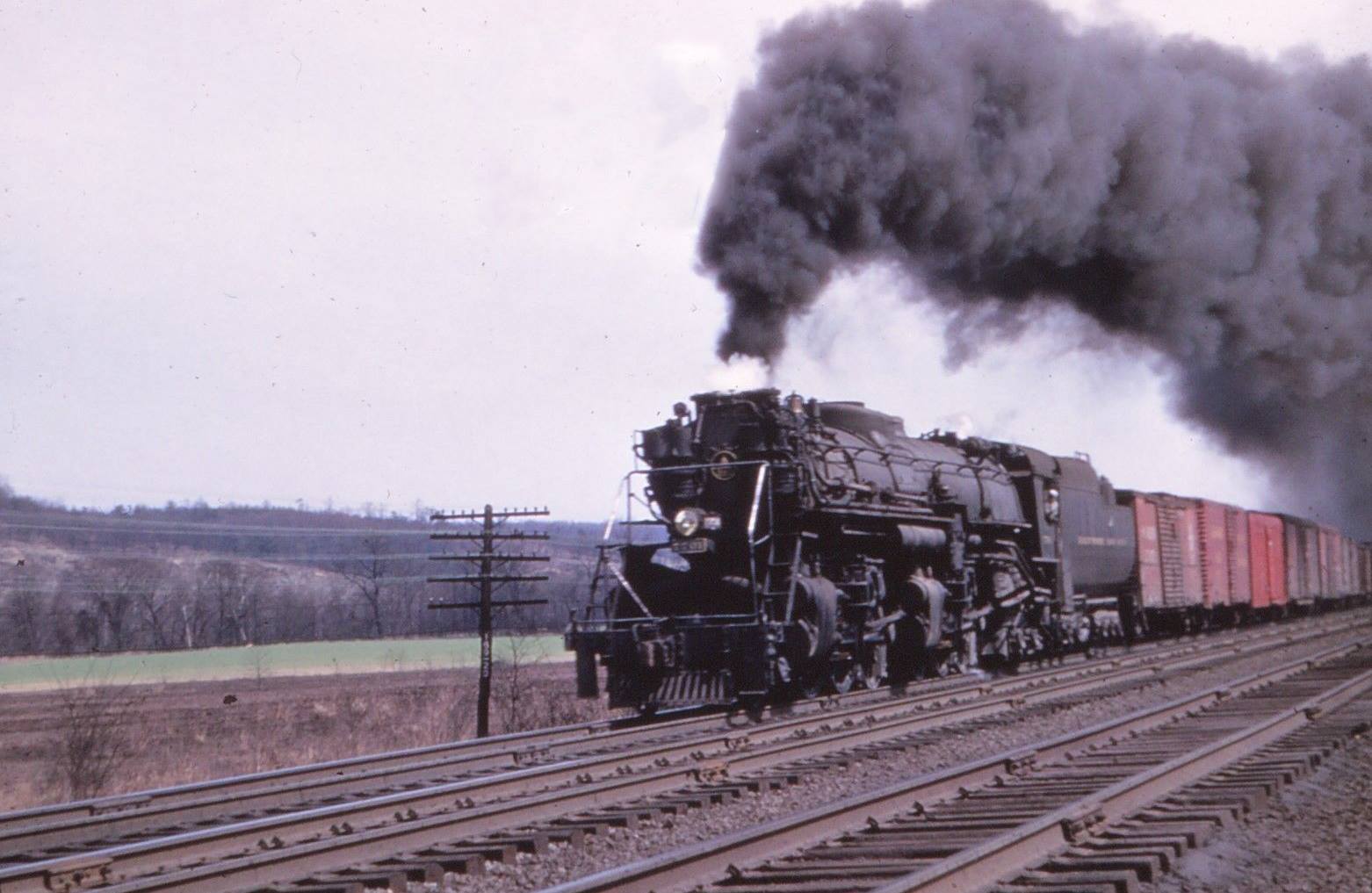 Baltimore & Ohio 2-6-6-4 #7701 (KB-1) steams along the East End/Cumberland Division with a westbound manifest at Green Spring, West Virginia, located just east of the Patterson Creek Cutoff during the 1950s. These machines were built for the Seaboard Air Line in the mid-1930s and were acquired by the B&O during the summer of 1947 to fulfill a power shortage. Bill Price photo.
Baltimore & Ohio 2-6-6-4 #7701 (KB-1) steams along the East End/Cumberland Division with a westbound manifest at Green Spring, West Virginia, located just east of the Patterson Creek Cutoff during the 1950s. These machines were built for the Seaboard Air Line in the mid-1930s and were acquired by the B&O during the summer of 1947 to fulfill a power shortage. Bill Price photo.History
The Baltimore and Ohio, “Linking 13 Great States With The Nation.” This was the B&O's slogan for much of its existence and something which it held to for its entire life.
The B&O, holds the distinction of being this country’s very first common-carrier railroad being officially incorporated and organized on April 24th, 1827.
As this country’s first common carrier it was instrumental in helping to build and grow not only our economy but also the country itself when the “west” meant the Ohio River.
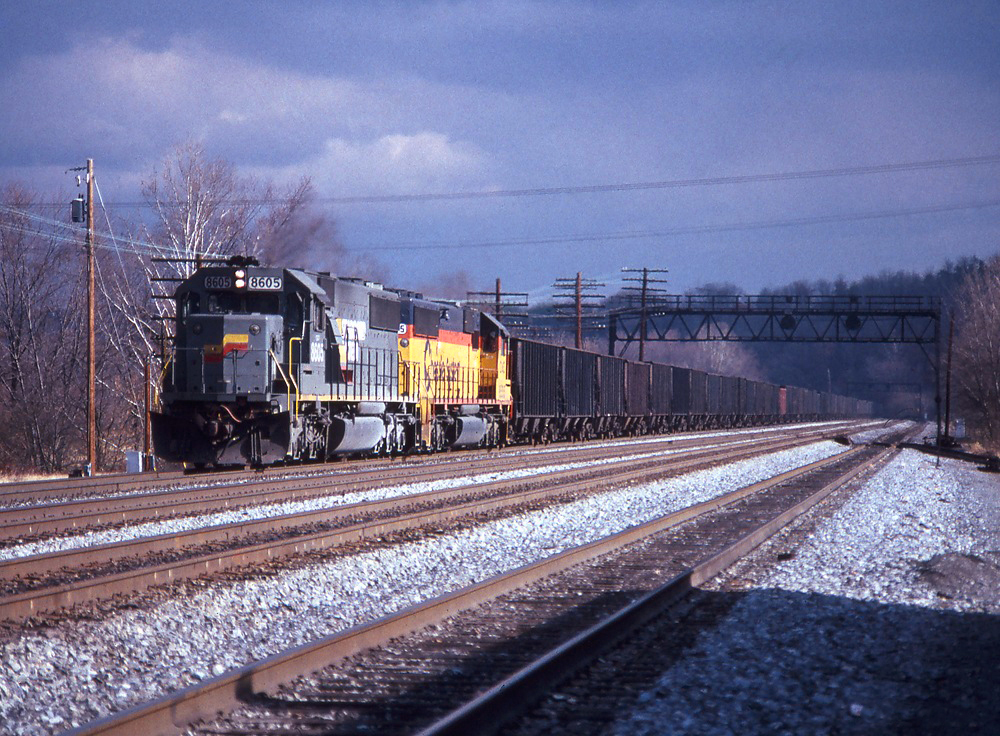 Another view of Green Spring, West Virginia as former Seaboard System and Chessie SD50's have a string of empty hoppers heading west on November 11, 1988. Wade Massie photo.
Another view of Green Spring, West Virginia as former Seaboard System and Chessie SD50's have a string of empty hoppers heading west on November 11, 1988. Wade Massie photo.While never a wealthy railroad throughout its existence its legacy will forever be remembered as a survivor and that it put customer service above all else.
When the company’s name and existence finally came to an end on April 30th, 1987 it had just celebrated its 160th birthday and witnessed the industry grow from nothing more than few scattered systems to a rail network consisting of tens of thousands of miles linking the country from coast to coast
Map
The Patterson Creek Cutoff was the railroad's attempt to relieve the growing congestion around Cumberland for through trains heading to Keyser and points west.
The project began around the turn of the century, officially starting at Patterson Creek, West Virginia at milepost 264.4 and known as the Patterson Creek & Potomac Branch.
Protecting the eastern junction was Patterson Creek Tower, or FN Tower, while the western junction was protected by McKenzie Tower (or CO) at milepost 281.3.
Patterson Creek & Potomac Branch
The cutoff had exactly one tunnel, Knobley, and one bridge, which was located just west of the tunnel and crossed the North Branch of the Potomac River.
Under the direction of president Lenor F. Loree (elected on June 1, 1901), the B&O nearly completed the cutoff. Interestingly, Loree resigned on January 1, 1904 before the project had been completed later that year.
The double-tracked route covered just 6.3 miles, according to the railroad's official timetable, before rejoining the main line at McKenzie, Maryland (Milepost 281.3).
The cutoff was primarily used as a bypass for coal trains so these consists did not clog the railroad's major classification yard at Cumberland.
Timetables
Knobley Tunnel
Below is more information concerning Knobley Tunnel, thanks to the B&O's "Official List" dated January 1, 1948:
Knobley Tunnel: Constructed in 1902 it is located 0.9 miles east of McKenzie Station and carries 3 degrees of curve for a distance of 821.5 feet on its eastern end with the rest of the structure 3,338.4 feet of tangent (straight) track. It is a total of 4159.9-feet long, 23' wide, and 30' high. The tunnel's portals are constructed of stone while the bore is lined with brick.
Abandonment
Patterson Creek Cutoff remained in use as a double-tracked affair until 1960 when the B&O reduced the route to a single line and closed CO Tower.
By the Chessie System era the cutoff was witnessing very litlte use. Charles Roberts notes that the railroad officially ended service over the line in 1974. Today, the right-of-way remains intact. While there have been discussions regarding possibly reopening the line as a relief valve this has never occurred.
Legacy
The cutoff was not easily accessible for railfans, although the community of Knobley did provide photography opportunities at Knobley Tunnel. As a result the line was not heavily photographed.
The famed Bill Price is known to have taken several photos of the during the 1940s and 1950s. Interestingly, by the 1960s the cutoff was already in decline and by the Chessie System era there were likely few, if any Chessie painted locomotives on the line.
As a heavily built, double-tracked route, though, the right-of-way is still easily visible and is actually regularly used by locals. While the line is unlikely to ever be rebuilt it would certainly be available to see trains once more given corridor's condition.
Recent Articles
-
Massachusetts - Wine Tasting - Train Rides
Dec 26, 25 03:37 PM
This article dives into some of the alluring aspects of wine by rail in Massachusetts, currently offered by the Cape Cod Central Railroad. -
Maryland - Wine Tasting - Train Rides
Dec 26, 25 03:34 PM
This article delves into the enchanting world of wine tasting train experiences in Maryland, providing a detailed exploration of their offerings, history, and allure. -
Florida Thomas The Train Rides
Dec 26, 25 03:32 PM
Each year, Day Out With Thomas™ turns the Florida Railroad Museum in Parrish into a full-on family festival built around one big moment: stepping aboard a real train pulled by a life-size Thomas the T…

